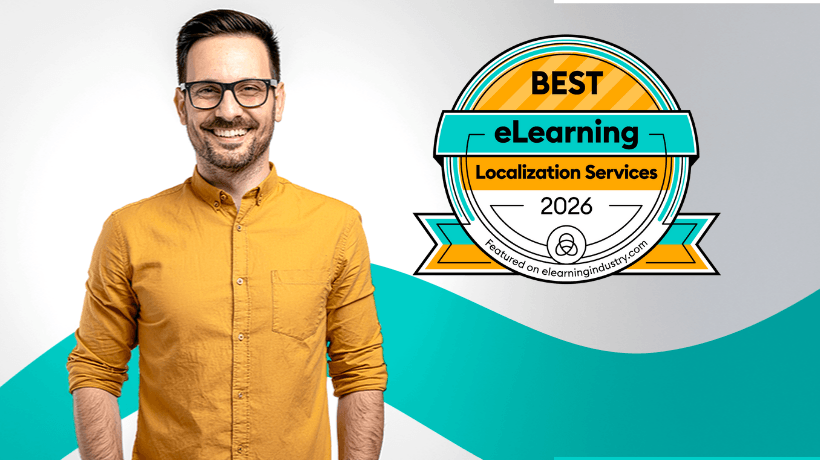eLearning Course Translation
First and foremost it is recommended that when looking at eLearning Translation you work with a firm that not only does language translation, but is also very experienced in the eLearning industry. The translation company needs to understand the different types of software platforms, like Lectora, Storyline, Captivate or iSpring, as well as Flash and custom XML formats. Translation among the different platforms can be technically challenging, so go with a firm that specializes in the industry or at least has a lot of experience using the platforms.
In addition to an understanding of the software platforms a translation firm needs to understand how to adapt languages for text and spoken, as many eLearning courses have an audio component. Ideally, the translation company will be able to work closely with the instructional designers as well, which will help iron out many of the details as they relate to translation.
Because tone is so important for eLearning it is recommended that you test linguists from the start, in order to identify which translators capture the style and essence more accurately. Vocabulary, word choices, general feel and tone are essential to make an eLearning Course one of a kind – and they must remain as untouched as possible in the translated versions.
Reference materials from the client are a big help here. If there are past translations, they can prove to be a great starting point for new translations. Glossaries, style guides, translation memory files... All of these can help translators keep their work consistent.
All of these steps must be part of the overall workflow in an eLearning course translation. An iterative and agile approach to translation is best as it will allow you to adapt as problems arise or courses are even changed mid-translation. Proper planning is the key to success in the lengthy, methodical process of an eLearning course translation.
General Guidelines And Workflow For Your eLearning Course Translation
Here are some general guidelines and workflow for your eLearning course translation:
- Start with a “pilot” phase, an initial segment or “proof of content”, with which the client can have a taste of the quality of the translation and express their approval.
- Based on this pilot segment, the client can formulate their suggestions and feedback, which will in turn serve as guidelines for the rest of the translation.
- Once the translation has been completed and approved after several reviews both from the translators’ side and the client’s, the latest must sign off the translation in order for the project to advance to the next phase: voice recording.
- The narration and voice over phase must have a similar structure as the translation phase: after obtaining approval on the group of selected voice talents, the translation company must provide samples and pilot segments so that the client can express their thoughts and suggestions.
- Once the recording phase is over, the audios must be edited, adapted and synchronized to fit the original videos and learning materials, and this is another process that takes time and client feedback.
- Communicate more than you think…keep an open dialogue.
All in all it isn’t a difficult process; just one that has a lot of steps and areas for confusion. Receiving and giving input throughout the process is crucial and will help dramatically. The regular exchange of thoughts, the sending of text and audio samples, status updates, batches of files as the project develops all create a cycle of trust and openness between the translation company and the client. Sometimes, determining the client’s wants, needs and preferences is not as simple as just asking directly – it requires insight, insistence and a knack for asking the right questions.
Strengthening relationships and keeping communications open between a translation company and the client is a definite must in the practice of an e-Learning Course translation, and while it takes effort and time, it is undoubtedly the most rewarding course of action for every party involved.







